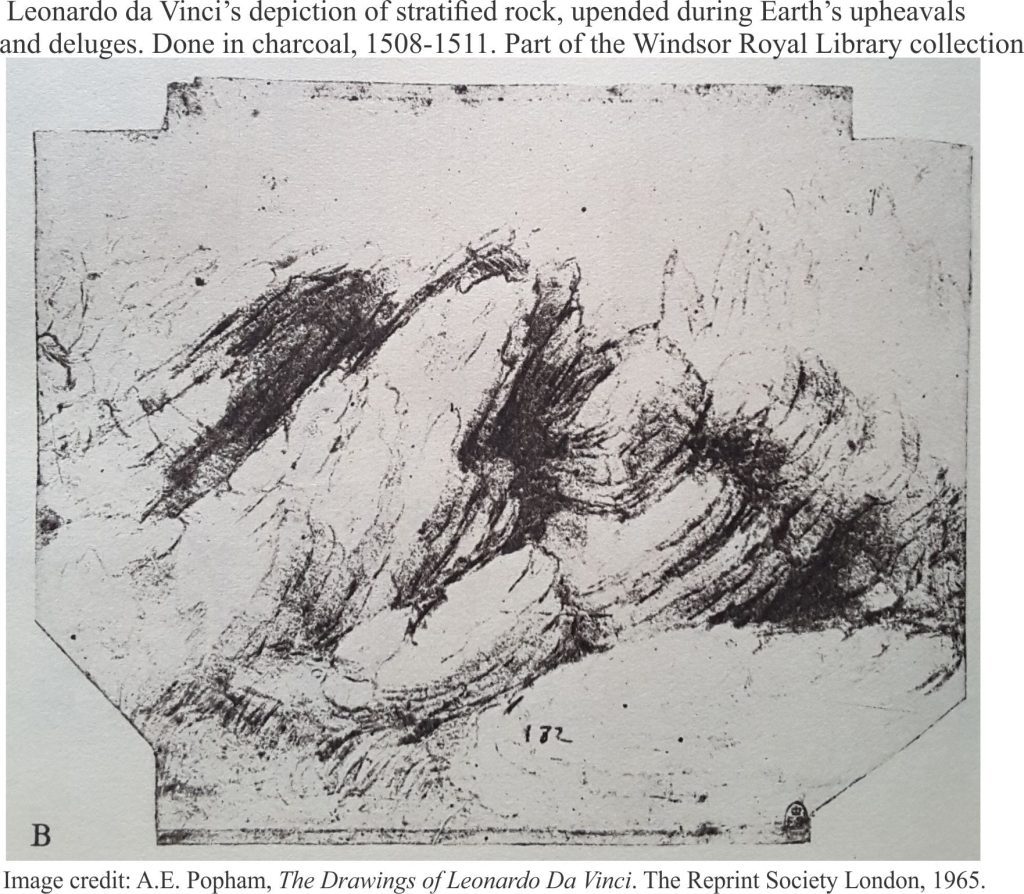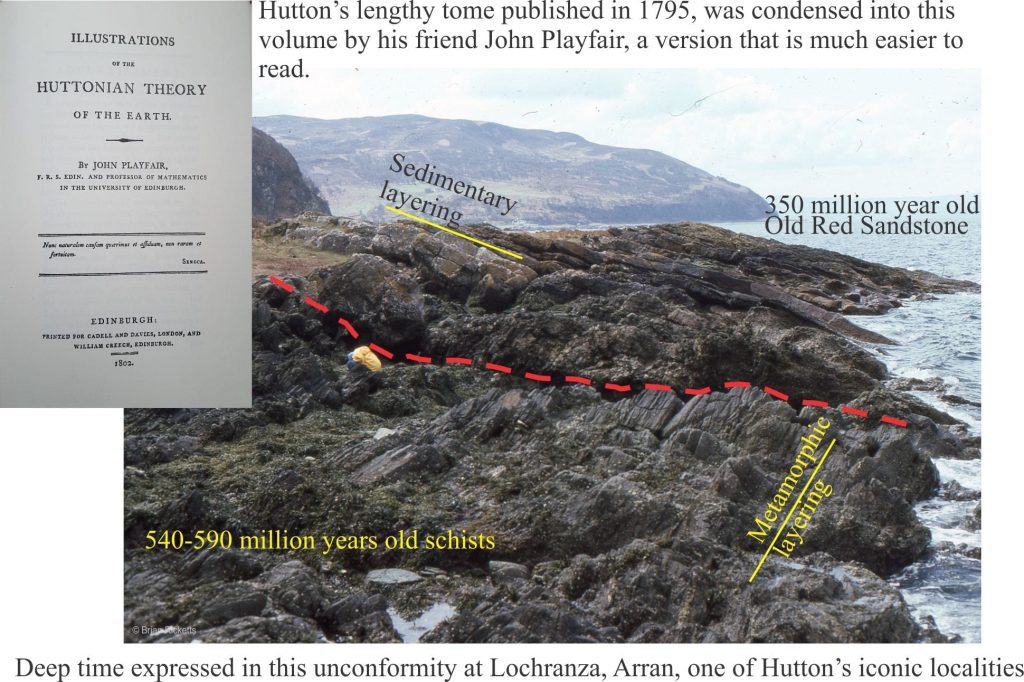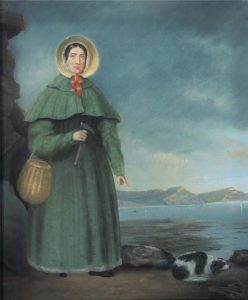This and the following two posts look briefly at the development of stratigraphic concepts and the characters responsible for them.
This is part of the How To…series on Stratigraphy and Sequence Stratigraphy
Preamble: My intent was to write a single post on this topic, as an introduction to Stratigraphy in general, and Sequence Stratigraphy in particular. But I kept adding names to the timeline, and got carried away with some of the characters on it. So, the number of posts was expanded. This post deals with five icons spanning the 15th through 18th centuries.
Modern stratigraphy requires us to observe strata, to decipher their origin, and evaluate the time relationships between one bed and the next, from one location to the next. Modern stratigraphy is concerned with the dynamics of Earth processes in a historical context. The stratigraphic history of Earth is an epic tale, told with maps and images of its sedimentology, paleontology, volcanology, geochemistry, geochronology, geophysics, and all their subdisciplines.
It has not always been thus. Sequence Stratigraphy, the current paradigm, is only 43 years old. But inquisitive people have been recording and unraveling stratigraphic problems for at least 500 years. The evolution of stratigraphic principle is a fascinating story in itself, told by folk who had to battle religious and political repression (sometimes at great personal cost), the prejudice of class, and the egos of fellow scientists.
I have picked a few names out of the historical hat; some are well known, others less so. The list is not exhaustive – I apologise in advance if I’ve left out your favourite historical personality. Not everyone on the list contributed memorable pronouncements or axioms. Some we remember as much for their role in breaking down social barriers as for their science.
I begin with Leonardo da Vinci, not because of any particular discovery, but because he was a quintessential Renaissance polymath. His notes on strata and fossils, compiled about 1508, reveal a remarkable ability to reason beyond dogma, while being fully aware that in doing so he would annoy the church hierarchy. Da Vinci’s notes are all written in mirror image, and it is tempting to imagine him doing this to avoid discovery by zealous theologians, but the jury is still out on that debate.
The timeline ends with Peter Vail and Robert Mitchum. Their 1977 publications on sequence stratigraphy set in motion a new and exciting way to look at strata, ancient environments, and geological time. Since then sequence stratigraphy has been tweaked, poked and prodded, but its underlying structure has remained reasonably intact.
Leonardo da Vinci (1452-1519)
DaVinci’s notes on fossils were discovered in 1690, but were relatively unknown until 1717 when they were purchased by the Earl of Leicester – hence the name Codex Leicester. This, and other codices were never published during his life. It is unlikely that Steno or Hutton knew of its existence (or for that matter Newton or Galileo). However, Charles Lyell quotes a short paragraph of da Vinci’s explanation concerning the fossilisation of marine shells, so knowledge of the Codex had infiltrated the world of British and European naturalists, perhaps during the 19th century (Lyell, 1872, Volume 1, p.31). The Codex also contains many notes on flowing water and hydraulics.
Stephen J. Gould’s essay The Upwardly Mobile Fossils of Leonardo’s Living Earth, provides an erudite account of the Renaissance context of da Vinci’s foray into geology. The prevailing 15th and16th century explanation for fossil clams found on mountain tops was that they had grown, by some mechanism of mineralization, within the rocks. The word fossil was used to describe these structures, but it had no biological or organic connotation – fossils grew by mineral emanations. Da Vinci’s observations and inferences about fossil clams were astute. By observing living molluscs, he surmised that his mountain clams were originally living forms on the sea floor, that became filled with mud. They now reside at high elevations because sea levels were once higher. The interpretation has, at its core, a kind of pre-Huttonian version of Uniformitarianism. His arguments specified that:
- If they were mineral formations, why are they not forming now?
- Why were complete, articulated clams mixed with broken fragments – growing as broken fragments did not make a lot of sense.
- He recognised that certain shell layers occurred on both sides of a valley. They must have been, at some time, part of the same continuous layer. This conclusion is even more fascinating because it presaged Steno’s axiom of lateral continuity.
- Clams occurred in successive layers – these could not have been deposited during a single deluge.
- He identified growth rings on the outer surfaces of shells. If they had grown in the rock, what did they eat?
- Da Vinci was well versed in the action of water with sediment (there are many sketches of flowing water attached to his ideas on hydraulics). He noted that living clams were associated with water-borne sediment, and that the fossil versions showed similar characteristics.
- He observed that living clams are associated with worm traces, and that this association was also present in fossil form – his must have been some of the earliest descriptions of trace fossils as organic structures.
Nicolaus Steno (1638-1686)
Nicolaus Steno was a Danish scientist, a pioneer in both anatomy and geology who became a Catholic bishop in his later years. He, like da Vinci, was one of the early proponents of paleontology, recognizing fossils as remnants of ancient life, rather than structures that had grown in the rock. Unlike Da Vinci, Steno published his observations and interpretations.
Steno is best known for his three stratigraphic principles which were published in de Solido… in 1669, but were largely forgotten until rediscovered by Alexander von Humboldt 154 years later – apparently von Humboldt let Charles Lyell know of the book’s existence (Hansen, 2009). However, Steno also contributed important philosophical narratives on scientific method, emphasizing its separation from religious arguments, reducing problems to their simplest terms while keeping an eye on the whole picture, and making inferences based on experiment, analogy and logic. His 17th century version of scientific method is remarkably modern.
The law of superposition is an axiom that is fundamental to geology, archaeology, and other fields dealing with geological stratigraphy. In plain language, it states that in undeformed stratigraphic sequences, the oldest beds will be at the bottom of the sequence.
The Principle of Original Horizontality states that layers of sediment are originally deposited horizontally under the action of gravity.
The principle of lateral continuity states that layers of sediment initially extend laterally in all directions; in other words, they are laterally continuous. This concept is central to geological mapping and correlation of beds or successions of beds.
Antoine Lavoisier (1743-1794)
Lavoisier was one of those enlightenment personalities who dabbled in everything. He is best remembered for his discovery of the elements oxygen and sulphur, and the process of burning.
His contribution to stratigraphy (1789) was also significant in the following ways:
- He recognised that the grain size of sediment on the sea floor changed from beach to offshore, and that this property could be used in the stratigraphic record where beds having different character occur in succession. This concept is central to facies analysis and paleoenvironmental reconstructions.
- Importantly, he associated these stratigraphic changes with rises and falls in sea level, and consequently migrating shorelines. His published diagram clearly illustrates the progress of sedimentation during transgression and regression – concepts that form the basis of modern stratigraphic analysis. The formulation of migrating shorelines is commonly attributed to Walter Grabau, 1909 (Carozzi, 1965), but Lavoisier may have beaten him to it.
Carozzi’s paper contains his translation of the original Lavoisier memoir “General Observations on the Recent Marine Horizontal Beds and on Their Significance for the History of the Earth”. In his reconstruction, Chalk (2) and near shore littoral strata (including chalk-chert nodule conglomerate – 3) onlap bedrock (1) during sea level rise. They are overlain by deep water, fine-grained pelagic deposits (4), the depositional edge of which also migrates landward. The pattern reverses during regression, where littoral deposits (5) and the shoreline, migrate seaward – in Lavoisier’s own words “I shall call these deposits littoral beds formed in receding sea in order to distinguish them from similar ones formed in rising sea…” (Carozzi, 1965, p. 79 – the emphases are Lavoisier’s).
Lavoisier’s inquisitiveness and passion extended to finance and politics. He must have rubbed some folk the wrong way during the French Revolution, tragically losing his head, a victim of the unbridled violence of the time.
James Hutton (1726-1797) and The Principle of Uniformity
The prevailing dogma during most of the 17th and 18th centuries was that earth was no older than about 6000 years according to calculations based on scripture by Bishop Ussher. The processes that form landscapes, volcanoes and mountain belts were thought of as Catastrophic, a concept that has its roots in the Noachian deluge. James Hutton, regarded by most as the founder of modern geology, presented in 1785 to the Royal Society of Edinburgh, his contrary thoughts on how the Earth formed. Hutton understood that the Earth was really old, a conclusion based on lengthy observation of natural processes. He could find “… no vestige of a beginning, no prospect of an end”. This is a profound statement. For Hutton geological time was immense. It had to be immense because the processes he observed (that produce landscapes) worked inexorably slowly from a human perspective. His ideas were the complete antithesis of Catastrophism.
One of the most important of Hutton’s corollaries was that the natural processes resulting in landscapes, mountain belts and oceans progressed with the same intensity and as uniformly in the distant past as they do today. This statement has had a profound influence ever since. This is the concept of Uniformity; the expression uniformitarianism was coined by William Whewell in 1832. The other iconic expression – the present is key to the past – was invented by geologist Archibald Geikie in 1905.
An important part of Hutton’s expression of deep time is unconformities. The example from Lochranza (Arran, west Scotland) illustrates beautifully the contortions of rock units that must have contorted Hutton’s mind when confronted with it. That he was able to unravel the sequence of geological events at this and other well-known sites attests to the depth of his inquiry and creativity. We now know that the time gap at the unconformity is about 240 million years.
Mary Anning (1799-1847)
At a time when science was undertaken primarily by ‘gentlemen’ of sufficient social standing, Mary Anning’s rise to prominence raised more than a few eyebrows. The thought of a woman clambering along cliffed beaches, hems muddied, was too much for such gentlefolk. She began her naturalist leanings by collecting fossils, specifically Jurassic fossils from the Lyme Regis coast (southwest England). Many specimens were sold to help make ends meet. She became so proficient at collecting and identifying molluscs (particularly ammonites and belemnites) and other fossil groups, that luminaries like Louis Agassiz, Henry de la Beche, and William Buckland requested her assistance in the field. She discovered the first complete Ichthyosaur, plus a relatively intact Plesiosaurus that William Conybeare obtained and presented to scientific circles, but omitted mention of Anning. Mary was the first to identify coprolites for what they really are – fossil excreta.
Despite her reputation and skills (intellectual and physical) she was spurned by learned societies (as were all women at the time). Even the gentlemen who used her contributions in their own publications often refused to acknowledge her. Agassiz on the other hand did acknowledge her in naming a couple of species of fish.
Additional links in this series:
A timeline of stratigraphic principles; 19th C – 1950
A timeline of stratigraphic principles; 1950-77
Baselevel, Base-level, and Base level
Sediment accommodation and supply
Autogenic or allogenic dynamics in stratigraphy?
Stratigraphic cycles: What are they?
Sequence stratigraphic surfaces
Shorelines and shoreline trajectories
Stratigraphic trends and stacking patterns
Stratigraphic condensation – condensed sections
Depositional systems and systems tracts
Which sequence stratigraphic model is that?
References
A.V. Carozzi, 1965. Lavoisier’s fundamental contribution to stratigraphy. Ohio Journal of Science, v.65.
S.J. Gould, 1998. The Upwardly Mobile Fossils of Leonardo’s Living Earth. In: Leonardo’s Mountain of Clams and the Diet of Worms. Harvard University Press, p. 17-44.
J.M. Hansen, 2009. On the origin of natural history: Steno’s modern, but forgotten philosophy of science. Geological Society of America, Memoir 203, p. 159-178.
G.V. Middleton, 1973. Johannes Walther’s law of the Correlation of Facies. Geological Society of America Bulletin, v. 84, p. 979-988.
A.E. Popham, 1965. The Drawings of Leonardo Da Vinci. The Reprint Society London
S. Turner, C.V. Burek, R.T.J. Moody, 2010. Forgotten women in an extinct saurian (man’s) world. In, Moody, R. T. J., Buffetaut, E., Naish, D. & Martill, D. M. (eds) Dinosaurs and Other Extinct Saurians: A Historical Perspective. Geological Society, London, Special Publications, 343, 111–153.






